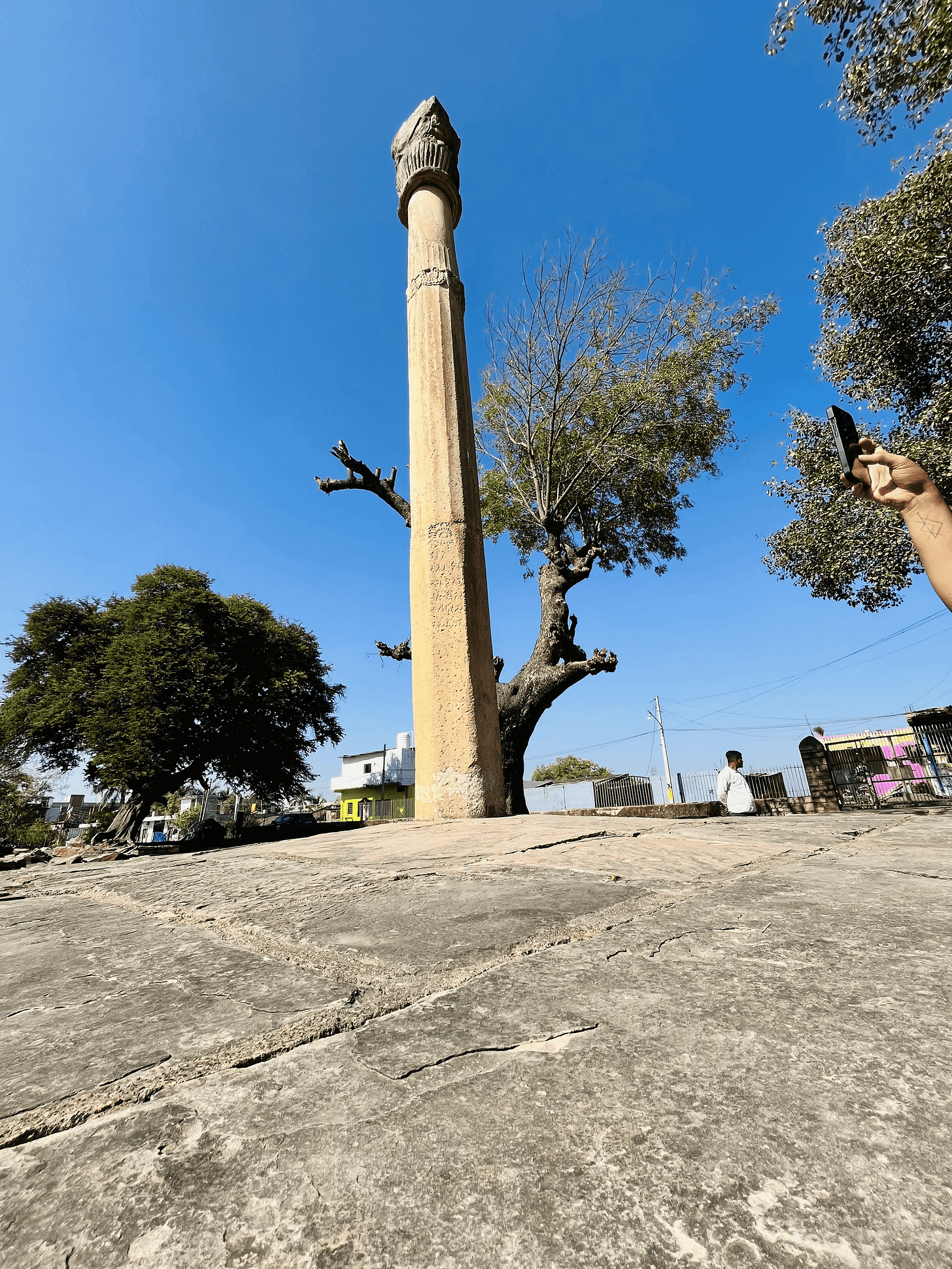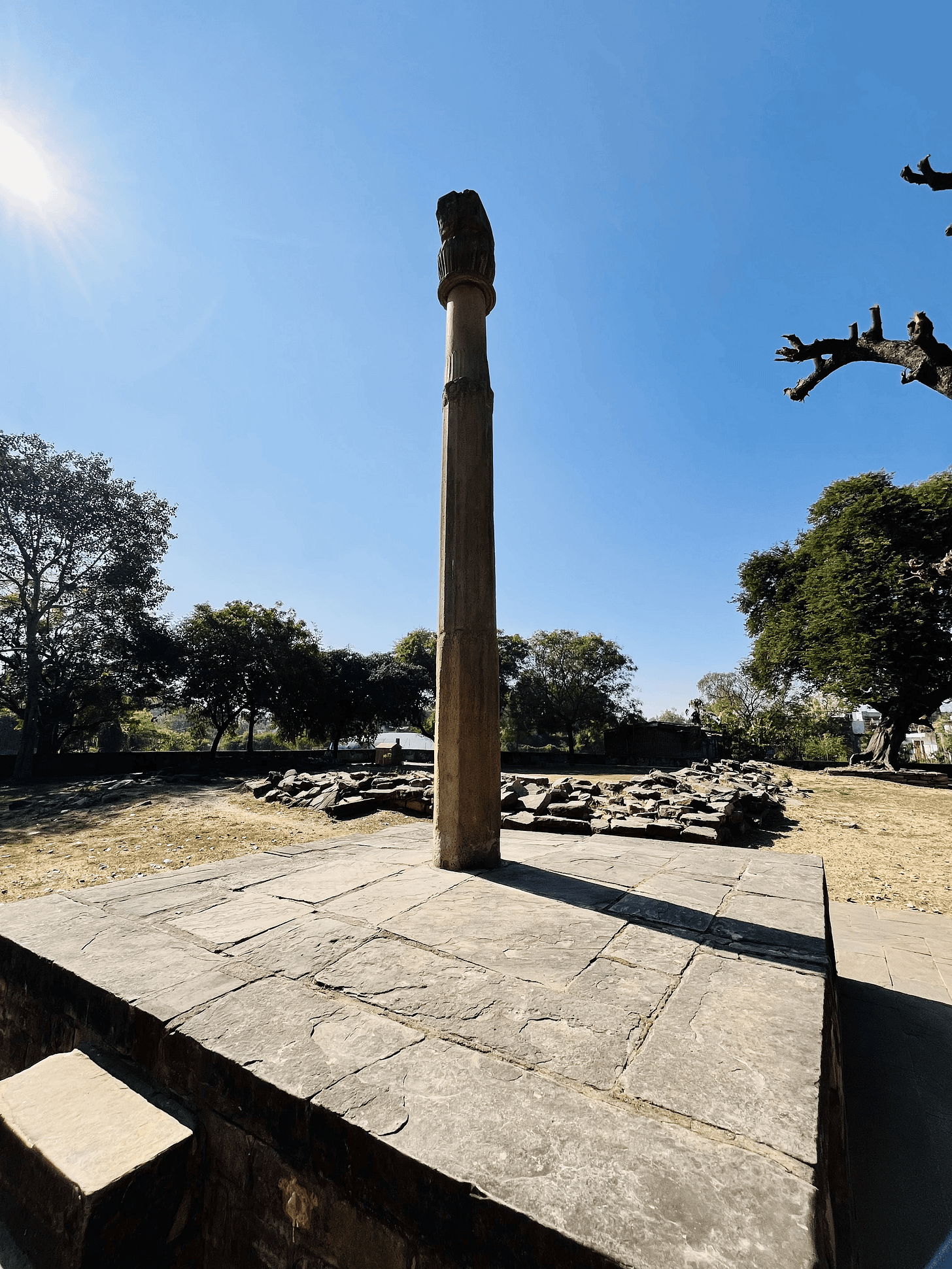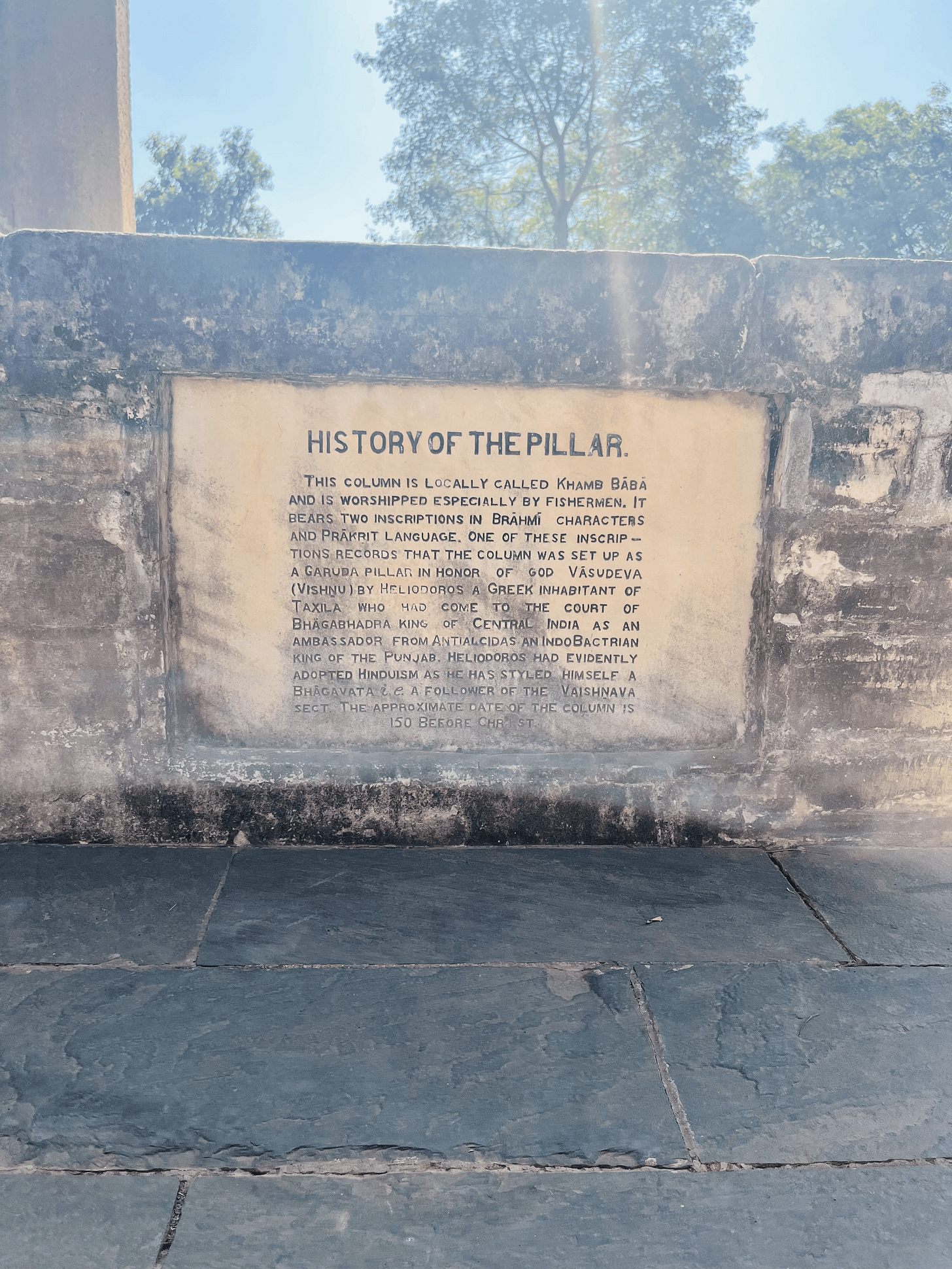A Pillar Between Worlds
Where a Greek Ambassador’s Devotion Meets the Sacred Heart of Ancient India
A narrow, winding lane skirting the edges of Vidisha, lined with modest mud-brick homes, bicycle repair stalls, and tiny provision shops, slips past daily life with the inconspicuous ease of dust in wind. To the casual passerby, it offers little hint of significance. Yet for those who follow its course, it leads, almost unintentionally, to something extraordinary: a solitary pillar of sandstone, timeworn but steadfast, rising like a whisper from the ancient earth.

This is the Heliodorus Pillar.
Standing 6.5 meters tall and capped with a bell shaped capital, the pillar is etched with delicate carvings, geese mid flight, tendrils of honeysuckle, that have faded with time, yet still breathe the memory of a refined, ancient artistry. Locals know it as Khamba Baba, reverently draped in vermillion and cloth, a site of quiet devotion where history folds seamlessly into faith.
Erected in the 2nd century B.C., this unassuming monument marks an extraordinary cultural entanglement. It was commissioned by Heliodorus, an envoy from the Hellenistic court of Antialkidas in Taxila, sent to the court of King Bhagabhadra of Vidisha. In this small column lies evidence of one of the earliest known encounters between the Hellenistic world and Indian religious thought, a moment of sincere diplomatic and perhaps even spiritual exchange.

The site once formed part of Vidisha, a prosperous trading city near Sanchi, nourished by the fertile soil at the confluence of the Betwa and Beas rivers. Vidisha thrived along the Dakshinapatha, the southern trade artery linking the Ganges basin with the Deccan and the western seaports. The Heliodorus Pillar stood at the city’s northeastern threshold, watching over the traffic of merchants, pilgrims, and wanderers.
In comparison with the more majestic Ashokan pillars, the Heliodorus column is modest, faceted, pink-brown in hue, and originally polished to a softer sheen. It lacks the imperial gravitas of Ashoka’s monuments, yet compensates with intricate ornamentation and a uniquely syncretic story.
When British archaeologist Alexander Cunningham first encountered it in 1877, he misread its age, assigning it to the Gupta period. It wasn’t until 1901, when a layer of devotional paste was carefully removed, that an inscription in early Brahmi script came to light, altering our understanding of the pillar’s origin and meaning.
Two inscriptions, carved in Prakrit, stretch across its faces. The first declares:
“This Garuda-standard of Vāsudeva, the God of Gods, was erected here by Heliodoros, the son of Dion, a man of Taxila, sent by the Great Yona King Antialkidas as ambassador to King Bhagabhadra, the Savior son of the princess from Varanasi, in the fourteenth year of his reign.”
The second offers a moral compass, timeless in its simplicity:
“Three immortal precepts… when practiced, lead to heaven: self-restraint, charity, consciousness.”
These words, modestly etched, represent one of the earliest known records of a foreigner not just acknowledging but venerating a Hindu deity, Vasudeva, an early form of Krishna, suggesting that Heliodorus may have embraced the path of the devotee, or at the very least, stood before Indian wisdom with deep reverence.

The pillar thus serves as both relic and revelation. It confirms the Indo-Greek presence in central India and testifies to the vitality of Taxila as a crucible of intellectual and spiritual life. More than stone, more than inscription, it is a bridge between civilizations, a quiet sentinel that reminds us how boundaries blur when belief, curiosity, and diplomacy converge.
And so, Khamba Baba stands, not just as a symbol of faith or history, but as a witness to the soft, improbable moments where cultures meet, converse, and sometimes, kneel together.





Absolutely fascinating! And mind-boggling to me that something so small and simple can stand for such a long time
Yeah it's really interesting. During my recent visit to the National Museum, I came across how Hellenistic and Indian art styles influenced the Gandhara school of Arts. The most striking features were how they depicted Buddha in Hellenistic features like wavy hair, muscular physique and Greek hairstyle. Truly amazing to learn about this Heliodorus pillar.